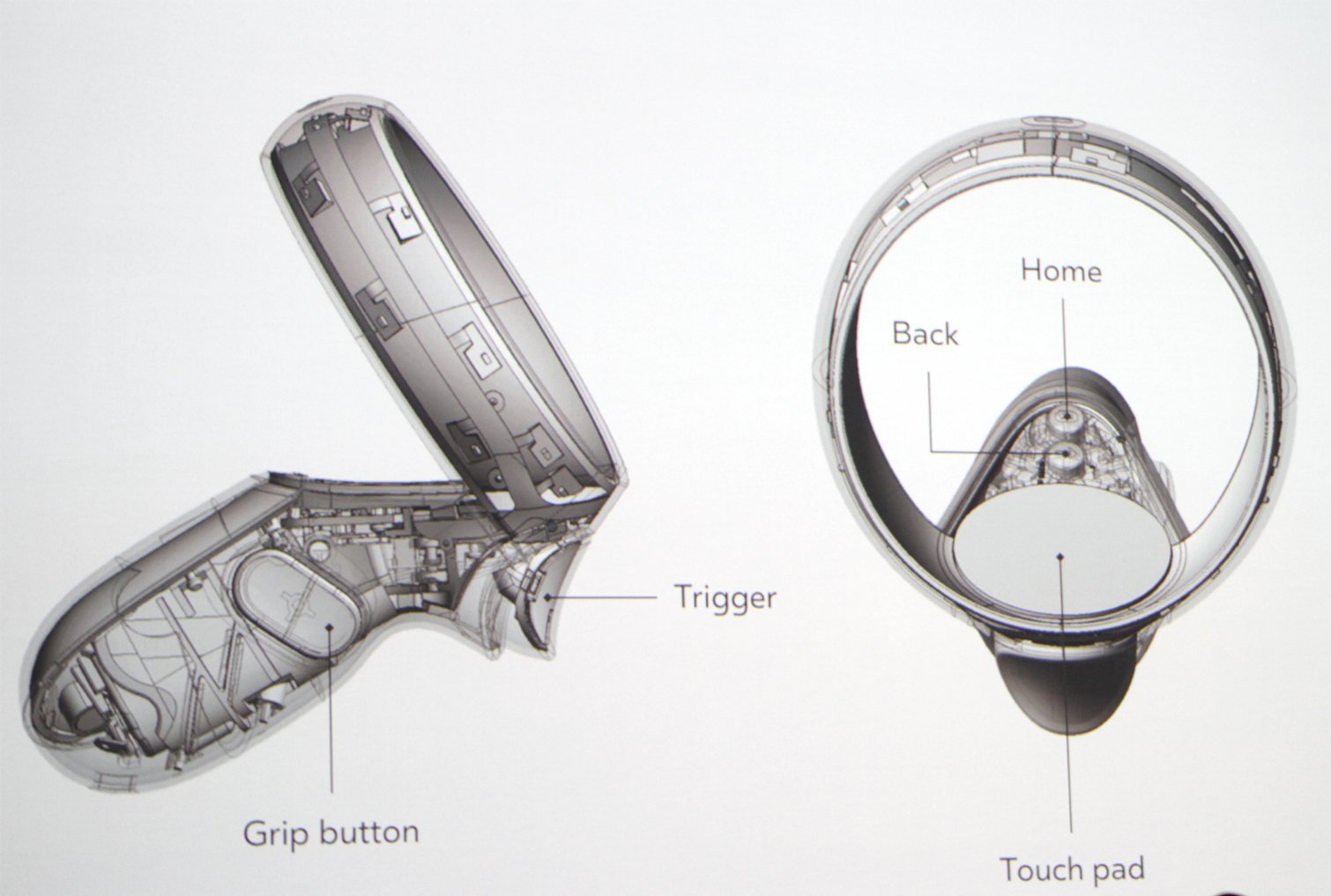Oculus Project Santa Cruz: What We Know (So Far)
Oculus announced not one but two standalone, untethered HMDs at Oculus Connect 4, but the company neglected to mention some key details such as what hardware is inside or even what platforms the devices run on. We’ve discussed that the first of the two, the Oculus Go, runs on a Snapdragon 821 SoC, and we’ve learned that the second, Project Santa Cruz, is built on the Snapdragon 835 SoC.
The Santa Cruz That Was
Both Project Santa Cruz and the Snapdragon 835 should both be familiar to anyone who’s been following VR for the last year. In fact, it was at Oculus Connect 3 a year ago when we saw an early prototype of Project Santa Cruz. It was a self-contained device, meaning all of the computing and tracking hardware were onboard, like the HoloLens.
It also offered inside-out six degrees of freedom (6DoF), which ostensibly offered spatial tracking, which was performed by cameras mounted on the front of the HMD and processing done in software.
We also ascertained that it ran on fundamentally mobile hardware, not PC hardware.
Joining the 835 Family
A year later, most of what we knew and observed holds true. Oculus is still withholding key details, but a source close to the matter confirmed that this new version of Project Santa Cruz runs on a Snapdragon 835. That puts Oculus in the company of other hardware makers that have joined Qualcomm’s VR accelerator program.
To be clear, we aren’t sure if Oculus is in that program per se or if it’s just building around the 835, which happens to underpin the accelerator program. In any case, now Oculus, Lenovo, and HTC are building untethered, standalone HMDs based on the 835.
What About Content?
It’s important to note that because it’s on Qualcomm’s platform, Project Santa Cruz is therefore a fundamentally “mobile” device, which in this case could mean limitations on content. We presume at this point that the operating system is Android, which means you should get all the Daydream content, but because of the Oculus/Samsung relationship on the Gear VR, Project Santa Cruz should get all of that content, as well.
Get Tom's Hardware's best news and in-depth reviews, straight to your inbox.
We would be utterly shocked if that wasn’t the case; the other just-announced standalone Rift headset, the Oculus Go, was built to run Gear VR content out of the box, and it would make no sense at all if Project Santa Cruz didn’t follow suit.
We don’t yet know whether Project Santa Cruz will run any other Rift content.
The Sensors
We now know a bit about the sensor setup. There are four sensors--one on each corner of the front of the HMD--but they’re pointed slightly backward so they can better “see” the tracked controllers, especially if you wave them behind your head. In this way, the controller tracking is not limited to your visual field of view.
Oculus has not confirmed how the sensor data is handled, but we can make an educated assumption based on the nature of the 835 platform--it’s done via sensor fusion on the SoC’s DSP.
From the Qualcomm accelerator program:
DSP sensor fusion: The new SDK enables developers to create more responsive and immersive experiences with six degrees of freedom (6 DOF). This is easily done by accessing the right combination of camera positional data, high frequency inertial data from gyroscopes and accelerometers via the Snapdragon Sensor Core, and predictive head position processing with the Qualcomm Hexagon DSP.
The Controllers
The controllers are one of the core components of Project Santa Cruz that separate it from its little brother, the Oculus Go. They’re built by the same team that created the Touch controllers, which means they were (ahem) in good hands.
The controllers are 6DoF to the Go’s 3DoF, and although they use the same type of tracking as the Touch controllers, the Project Santa Cruz versions cut the bright LEDs on the halo ring in favor of less visually intrusive IR.
They also have a touchpad instead of a joystick like the Touch controllers.
We don’t know how much the final version of Project Santa Cruz will cost, and all we know is that it should be available sometime next year.
We’ll continue to update as we learn more.
Seth Colaner previously served as News Director at Tom's Hardware. He covered technology news, focusing on keyboards, virtual reality, and wearables.


